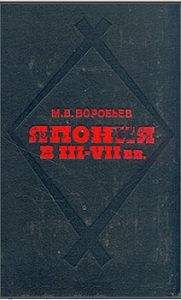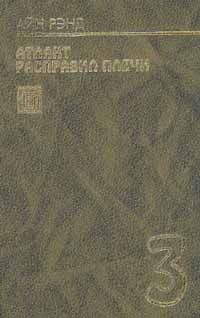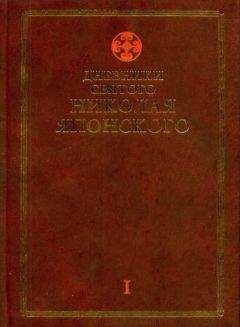Maekawa, 1965 (I). — Maekawa A. Problems of Status and Class System of Shisei and Bemin in 5th and 6th Centuries. «Rekishigaku kenkyu». Tokyo, 1965, № 304.
Maekawa, 1965 (II). — Maekawa A. Formation Process of Uji-Kabane-sei in Ancient Japan. — «Rekishigaku kenkyu». Tokyo, 1965, № 298.
Maki, 1970.—Maki Kenji. Conditions for the Correct Interpretation of Weich'ih. — wejen — ch'iuan — «Shirin». Kyoto, 1970, vol. 53, № 5.
Maki, 1962.—Maki K. The Society of Weijen in the Second and Third Centuries. — «Shirin». Kyoto, 1962, vol. 45, № 2.
Marugame, 1972.— Marugame K. Problems Concerning the Era of Ancient Times in Japan, — «Chosen Gakuho». Tenri, 1972, № 63.
Masumura, 1968.— Masumura H. Emperors of the Place of the Rising Sun and of the Place the Setting Sun — on the Credentials of the Japanese King. — «Shirin». Kyoto, 1968, vol. 51, № 3.
Miller, 1967.—Miller R. A. Old Japanese Phonology and the Korean-Japanese Relationship. — «Language». Baltimore, 1967, vol. 43, № 1.
Miller, 1974.— Miller R. J. Ancient Japanese Nobility. The Kabane Ranking System. Berkeley — Los Angeles — London, 1974.
Minami, 1963.— Minami H. Cultural Theories on Japan by the Japanese Scholars. A Geneological Review. — «Shiso». Tokyo, 1963, № 463.
Mitsuhashi, 1966.—Mitsuhashi T. Japanese Farming Prior to the Taika Reform. — «Keizai ronshu». Tokyo, 1966, v. 16, № 45.
Miyahara, 1966.— Miyahara T. The Structure of the Nu-hi in Ancient Japan. — «Rekishigaku kenkyu». Tokyo, 1966, № 312.
Mizuno, 1968.—Mizuno Yu. Origins of the Japanese People. — «Understanding Japan». Tokyo, 1968, № 22.
Mizuno, 1967,— Mizuno Yu. A Study of Zingu kogo. — «Shikan». Tokyo 1967, № 76.
Morris, 1971,—Morris I. Yamato Takeru. The Brave of Japan. — «History Today». L., 1971, vol. 21, № 9.
Mun Sa Wi, 1971.—Mun Sa W i. On Reclamation of Kinai Region by Immigrants from the Three Dynasties in Ancient Korea. — «Rekishigaku kenkyu». Tokyo, 1971, № 374.
Mflnsterberg, 1904, 1905, 1907.—Munsterberg O. Japanese Kunstgeschichte. T. 1–3. Braunschweig, t. 1 — 1904, t. 2 — 1905, t. 3— 1907.
Murdoch, 1910.—Murdoch J. A History of Japan. Kobe, 1910, vol. 1. From the Origins to the Arrival of the Portuguese in 1542 A.D.
Nachod, 1906, 1929.—Nachod O. Geschichte von Japon. Gotha, 1906 Bd 1 L
1929, Bd 2, H. 1.
Nakamura, 1969.—Nakamura H. A History of Development of Japanese Thought A.D. 592—1868, vol. 1. Tokyo, 1969.
Nakamura, 1961.—Nakamura H. Japan and Indian Asia. Their Cultural Relations in the Past and Present. Calcutta, 1961.
Nakamura, 1967.— Nakamua К. On the Land-ownership in Ancient Japan. — «Keizaigaku». Sendai, 1967, vol. 28, № 3–4.
Naoki, 1968.— Naoki K. Tax System and «Miyake» in Ancient Japan. — «Jimbun kenkyu». Osaka, 1968, vol. 20, № 9.
Naoki, 1962.— Naoki K. On the Private Military Force of Tenno in the Ancient Japan. — «Shirin». Kyoto, 1962, vol. 45, № 3.
Nash, Schaw, 1965.— Nash D., Schaw L. C. Achievement and Acculturation: A Japanese Example. — Context and Meaning in Cultural Anthropology. N. Y., 1965.
Naumann, 1967.— Naumann W. Die Qoldfunde von 749 und der Einfluss koreanischer Immigranten im Japan. — «Oriens Extremus». Hamburg, 1967, vol. XIV, № 1.
Nguyen, 1973.— Nguyen Khac-Kham. Japanese Culture and The Earliest Chinese Model. — «Studies on Japanese Culture». Tokyo, 1973, vol. 2.
Nishio, 1913.— Nishio K. The Mining Industry of Japan. — «Transactions of the American Institute of the Mining Engeneers». N. Y., 1913, vol. 43.
Noma, 1954.— Noma Seiroku. The Art of Clay. Primitive Japanese Clay Figurines, Earthenwares and the Haniwa. Tokyo, 1954.
Obayasbi, 1965.— Obayashi T. Some Theoretical Problems in Historical Ethnology. — «Minzokugaku kenkyu». Tokyo, 1965, vol. 30, № 2.
Oka, 1964.— Oka M. Ethno-Historical Formation of the Japanese People. — Japan, its Land, People and Culture. Tokyo, 1964.
Okubo, 1894.— Okubo T. Die Entwickelungsgeschichte der Territorialverfassung und Selbstverwaltung Japans in politischer und insbesonderen wirthschaftlicher Beziehung. Halle, 1894.
Рак Siln, 1972.—Paк Si1n, A Study of Earliest History of Japan. — «Chosen Gakuho». Tenri, 1972, № 65.
Pippon, 1935.— Pippon T. Shotoku Taishi Jfl Shichi Jo Kempo. Die 17 Verfassungsartikel
Shotoku Taishi's und eine japanische Interpretation. — Studien zur Geschichte und Kultur des Nahen und Fernen Ostens Paul Kahle zum 60 Geburtstag. Leiden, 1935. Podpalova, 1970.—Podpalova G. I. Soviet Historiography of Japan in 1960–1970. Moscow, 1970.
Podpalova, 1968.— Podpalova G. Fifty Years of Soviet Historiography of Japan (1917–1966). M., 1968. -
Ponsonby-Fane, 1959.—Ponsonby — Fane R. A. B. The Imperial House of Japan. Kyoto, 1959*.
Readings in Japanese History: Vol. 1: Early Japan — Heian. Tokyo, 1976.
Rih Jin Hi, 1974.— Rih Jin Hi. Some Problems of the Tombstone of King Kwang Kae-to. — «Shigaku zasshi». Tokyo, 1974, vol. 83, № 7.
Robinson, 1961.— Robinson G. W. Early Japanese Chronicles: The Six National Histories. — Historians of China and Japan. L., 1961.
Rumpf, 193… — Rumpf Fr. Die Historische Auswertung der altesten chinesischen Berichte uber Japan. В., 193…
Saeki, 1977.— Saeki A. Studies on Ancient Japanese History. Past and Present. — «Acta Asiatica». Tokyo, 1977, № 31.
Saito, 1969.— Saito T. Vestiges of the Culture of Naturalized Japanese from Korean and Chinese Birth in Our Country. — «Ninon rekishb. Tokyo, 1969, № 251–252.
Sakamoto, 1971.— Sакamоtо Y. Japan and Korea in the 3d Century. — «Rekishigaku kenkyu». Tokyo, 1971, № 369.
Sakamoto, 1969.— Sakamoto Y. Korea and Japan in the 5th Century. — «Shirin». Kyoto, 1969, vol. 52, № 5.
Sakazume, 1963.— Sakazume N. The Boot, the Emperor, the Rice and the Metal — «Kokogaku zasshi». Tokyo, 1963, vol. 49, № 1.
Sansom, 1962.— Sansоm G. B. Japan, A Short Cultural History. N. Y., 1962.
Sansom, 1958.— Sansom G. B. A History of Japan to 1334. Stanford Univ. Press. 1958.
Seki, 1962.— Seкi A. Concerning the Governors of Togoku During the Taika Era. — «Bunka». Sendai, 1962, vol. 21, № 2.
Seki, 1959.— Seкi A. The Taika Reform and the Authority of Tenno. — «Rekishigaku kenkyu». Tokyo, 1959, № 228.
Seki, 1973.—Seki K. The Eastern Expedition of Emperor Jimmu: True or Not? — «Rekishigaku kenkyu». Tokyo, 1973, № 394.
Seth, 1969.— Seth R. Milestones in Japanese History. Phil — N.Y., 1969.
Shiio, 1933.—Shiio B. The Relation between Japanese National Traits and Buddhism. Tokyo, 1933.
Shiozawa, 1965.— Shiozawa K. Les historiens japonais et le mode de production asiatique. — «La pensee». P., 1965, № 122.
Shirai, 1926.— Shirai M. A Brief History of Botany in Old Japan. — Scientific Japan. Past and Present. Tokyo, 1926.
Slawik, 1955.— Slawik A. Austronesische Elemente in den japanischen Reichgrunderungssagen
und das Hayato-Problem. — Congres International des Sciences Anthropologiques et Ethnologiques, 1952. Wien, 1955.
Smith, Mikami. — Smith D. E., Mi к ami Y. A History of Japanese Mathematics. Chicago, 1914.
Soon Yueh-lun, 1971.— Soon g Yueh-lun. A Study of Naturalized Japanese. From Chinese Birth in Ancient Times. — Proceedings of the Twenty-Seventh International Congress of Orientalists. 1967. Wiesbaden, 1971.
Suematsu, 1958.— Suematsu Y. Japan's Relations with the Asian Continent and the Korean Peninsula (Before 950 A.D.). — «Cahiers d'histoire mondiale». P., 1958, t. 4, № 3.
Sugiyama, 1971.—Sugiyama J. Some Problems of Deer Hunting. — «Chosengakuho». Tenri, 1971, № 60.
Suzuki, 1968.— Suzuki O. Historical Background of the Art of Asuka Period. — «Chosen gakuho». Tenri, 1968, № 49.
Suzuki, 1948.— Suzuki S. Study of Wej-jen-chuan from the Historical Data. — «To a Ronso». Tokyo, 1948, vol. 6.
Takahashi, 1956.— Takahashi H. K. Etat actuel et tendences generates des etudes historiques au Japon depuis la guerre. — «Revue historique». P., 1956, an. 80, t. 216, fasc. 1.
Takahashi, I960.—Tакahashi T. A Point of View of the Kokuzo System. — «Rekishigaku kenkyu». Tokyo, 1960, № 244.
Takakura, 1960.— Takakura Sh. The Ainu of Northern Japan. A Study in Conquest and Acculturation. Philadelphia, 1960.
Takekoshi, 1930.— Takekoshi Y. The Economic Aspects of the History of the Civilization of Japan. Vol. 1. L., 1930.
Tanaka, 1967.— Tanaka K. A Treatise on the Tradition of Empress Jingo. — «Journal of Gakugei Tokushima University». Tokushima, 1967, vol. XVI: Social Science.
Torigoe, 1975.— Torigoe K. Between the Gods and the Emperors: A New Reconstruction of the Early History of Japan. — «Memoirs of the Research Department of the Toyo Bunko». Tokyo, 1975, № 33.
Torigai, 1972.— Torigai N. Ruling Ideology of the Imperor (Tenno) System in Ancient Japan. — «Rekishigaku kenkyu». Tokyo, 1972, № 384.
Torikai, 1970.—Tогiкai N. The Establishment of the Clan Genealogy in «Kojiki». — «Rekishigaku kenkyu». Tokyo, 1970, № 364.
Tubaki, 1968.— Tubaki K. The Face of Japanese in Comparison with that of the Ainos, Manchus, Mongols, Northern Chinese, Hoimius (Chinese Muhummedans), Dahurs and Golds (Yupitatz). — Труды VII Международного конгресса антропологических и этнографических наук. Т. 3. М., 1968.
Tuge, 1961.—Tuge H. Historical Development of Science and Technology in Japan. Tokyo, 1961.
Ueda, 1962.— Ueda M. A Study of the Clans Moved to Korea in Former Ages of Taika. — «Chosen gakuho». Tenri, 1962, № 24.
Uemura, 1977.— Uemura S. The Empress Jingu and Her Conquest of Silla. — Memoirs of the Research Department of the Toyo Bunko (Oriental Library). Tokyo, vol. 35.
Uemura, 1955.— Uemura S. Concerning the Locations of the Yamataikoku, Kunakoku and Toumakoku Mentioned in the Wei Chi Weijen-chuan. — «Shigaku zasshi». Tokyo, 1955, vol. 64, № 12.
Wada, 1956.—Wada S. Ancient Japan in Oriental History. Kyoto, 1956.
Waida, 1976.— Waida M. Sacred Kingship in Early Japan: A Historical Introduction. — «History oi Religions». Chicago, 1976, vol. 15, № 4.
Wang Chi-wu. 1936.— Wang Сhi — wu. A Study of the Nomenclature «Japan». — «Historical Studies» («Shihhsueh chik'an»). Peking, 1936, № 2.
Wedemeyer, 1930.— Wedemeyer A. Japanische Fruhgeschichte. Untersuchungen zur Chronologie und Territorialverfassung von Alt Japans bis zum 5 Jahrhundert nach Chr. Lpz, 1930.
Wedemeyer, 1927.— Wedemeyer A. Zur Territorialentwickelung des japanischen Reich. Zur Chronologie des fruhjapanischen Geschichte. — «Zeitschrift der Deutschen Morgenlandischen Gesellschaft». Lpz., 1927, Bd VI, H. 1.
Wheeler, 1952.—Wheeler P. The Sacred Scriptures oi the Japanese. N.Y., 1952.
Yagi, 1965,—Yagi A. Again on the Text of the Imperial Edict of the Taika Reform. — «Shigaku zasshi». Tokyo, 1965, vol. 74, № 3.
Yaku, 1969.—Yaku M. The Kojiki in the Life of Japan. Tokyo, 1969.
Yamada, 1969.— Yamada K. The Internal Disturbance in the Yamato State in Equivalent to the Kibi Revolt Against Yamato. — «Konan keizaigaku ronshu». Kobe, 1969, vol. 10, Л» 1.
Yasumoto, 1973.— Yasumoto B. The Questions about the Yamatai-State and Emperor Jinmu's Eastern Expedition. — «Rekishigaku kenkyu». Tokyo, 1973, № 398.
Yasuda, 1971.— Yasuda N. Izanaki-Izanami Myth and Agricultural Rite of Italian Millet. — «Minzokugaku kenkyu». Tokyo, 1971, vol. 36, № 3.
Yazaki, 1968.— Yazакi T. Social Change and the City in Japan from Earliest Times through the Industrial Revolution. Tokyo, 1968.
Yoshida, 1972.— Yoshida A. The Emergence of Ancient Landlord (Kuni-no miyako) System in the Kibi Area. — «Rekishigaku kenkyu». Tokyo, 1972,JY° 384.
Yoshimura, 1972,—Yоshimura T. Fundamental Characteristics of the Agrarian Policy of the «Ritsur-yp State» during the Eight Century Japan as Regards the Development of" Ko-chi System. — «Shigaku zasshi». Tokyo, 1972, vol. 81, № 10.
Young, 1958.— Young J. The Location of Yamatai. A Case Study in Japanese Historiography 720—1945. Baltimore, 1958.
Авасэ китан — изготовление металлических изделий по способу «сочетания пластинок»
агата — округ
агата-мияцуко — управитель округа
агата-нусн — владыка округа
аеата-нуси-удзи — группа свойственников агата-нуси
адзиро — плетенка
асон — одно из клановых званий
атаэ — клановое звание (букв, «благородный»)
ая — клан переселенцев
ая-бэ — корпорация из переселенцев
аяхито — член корпорации ая-бэ
ая-но атаэ
ая-но обито — звания руководителей корпораций переселенцев — ая
ая-но сугури
Бу — клан, род (в Корее)
будзоку рэнго — племенной союз
бэ — корпорация зависимых
бэмин — член корпорации зависимых
бэньцао см. хондзо
Вакэ — одно из клановых званий (букв, «правитель»)
ван — король
Гакумонсо — паломники-богословы
гёбу-сё — уголовная палата
гёсю см. нагон
гихо ржи — календарь годов правления ифэн (676–678)
гонин—девиз годов правления (810–823)
госуй — контроль над орошением




